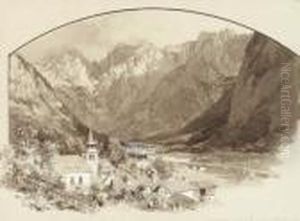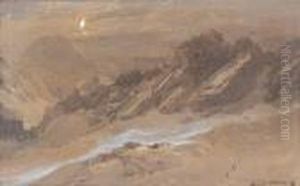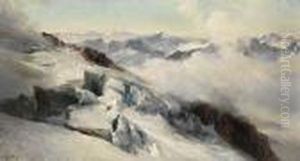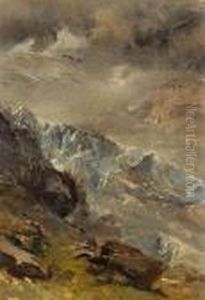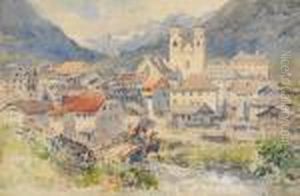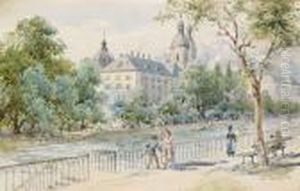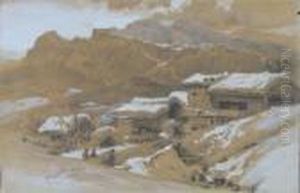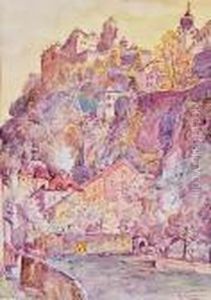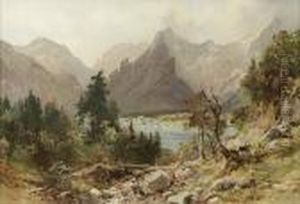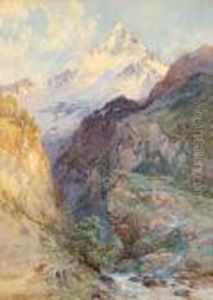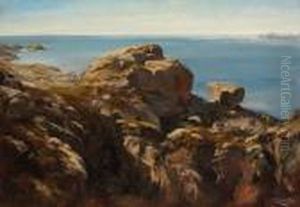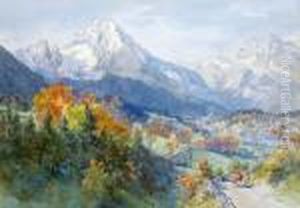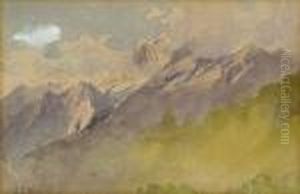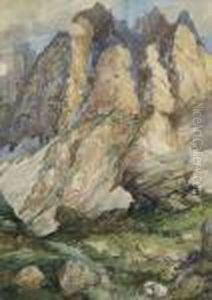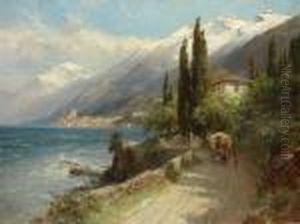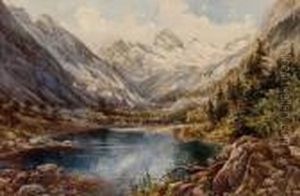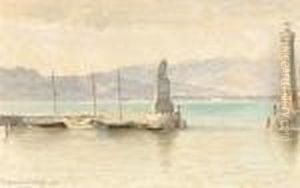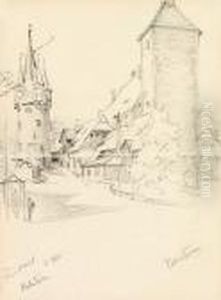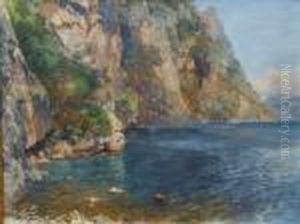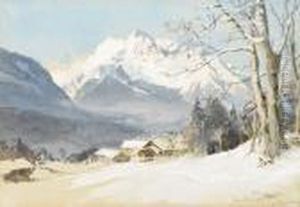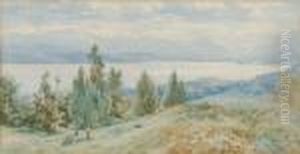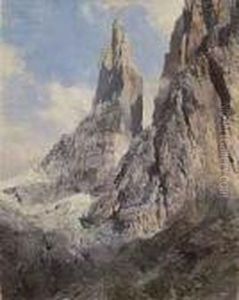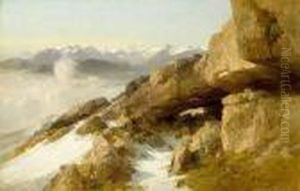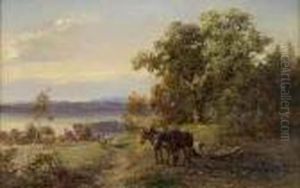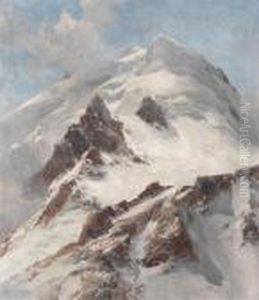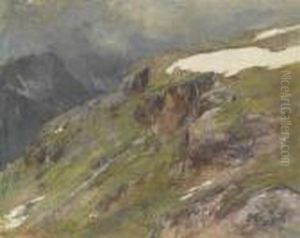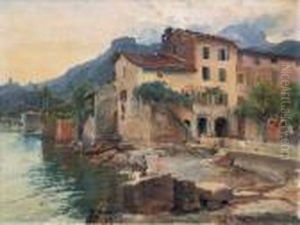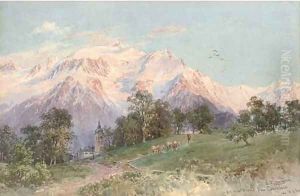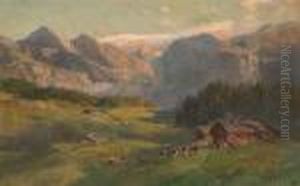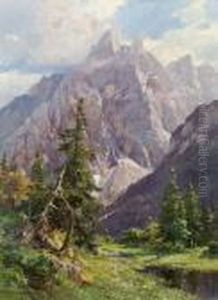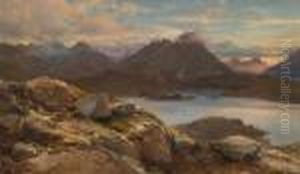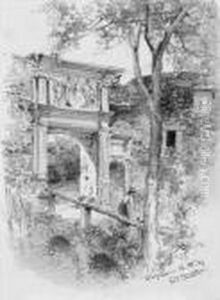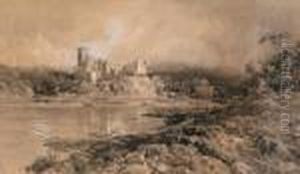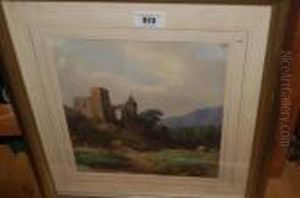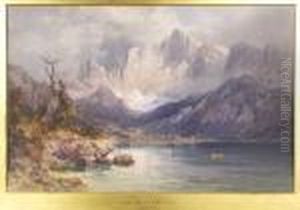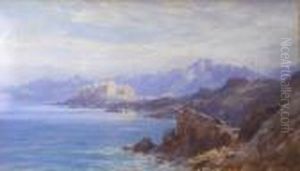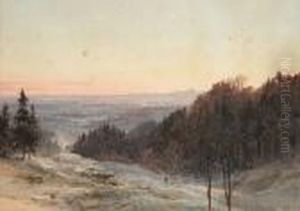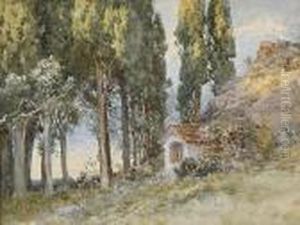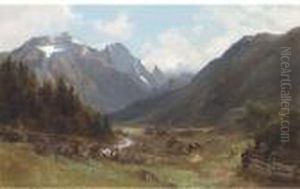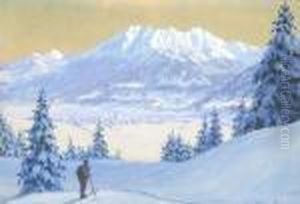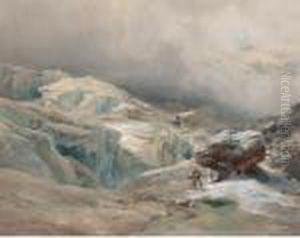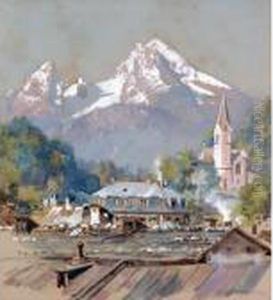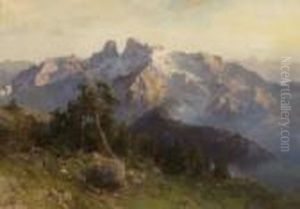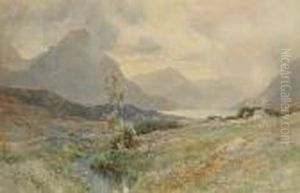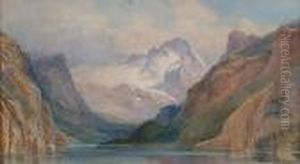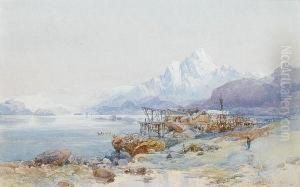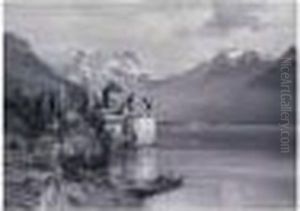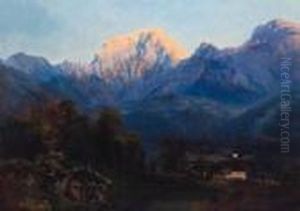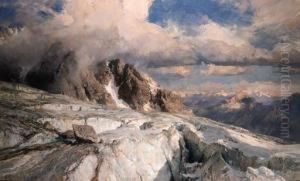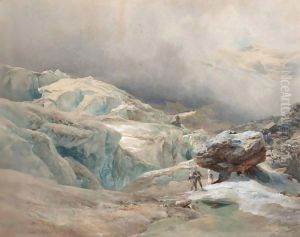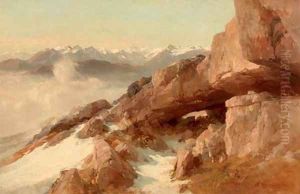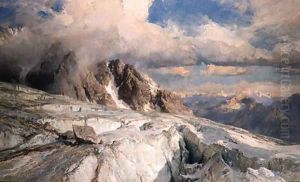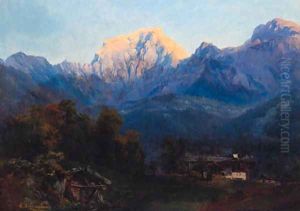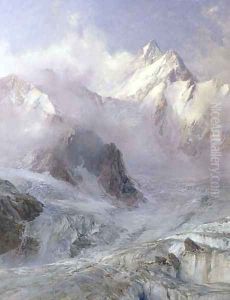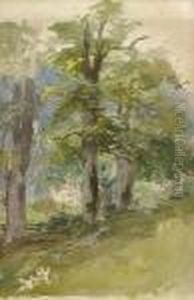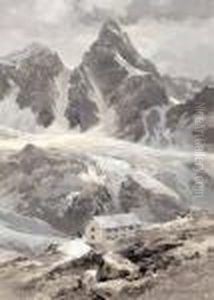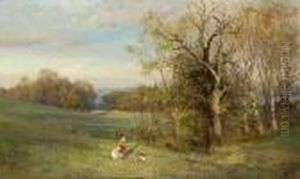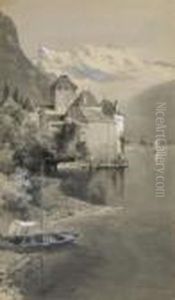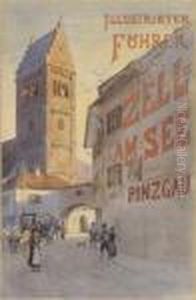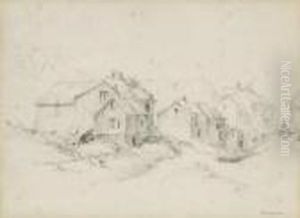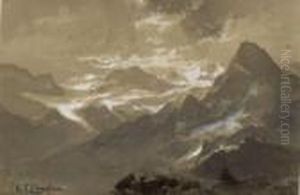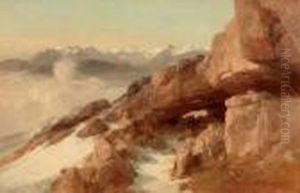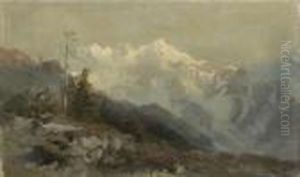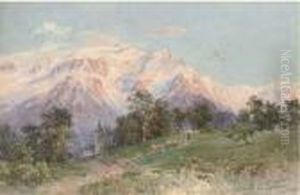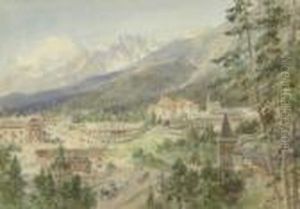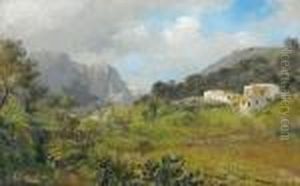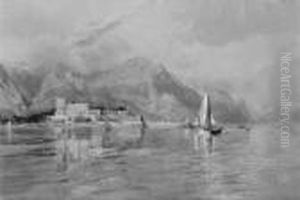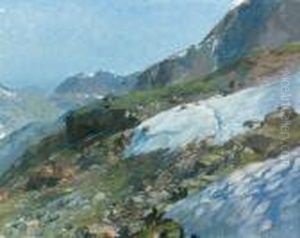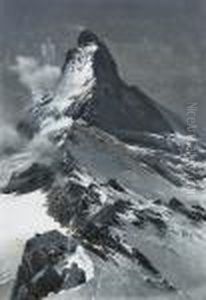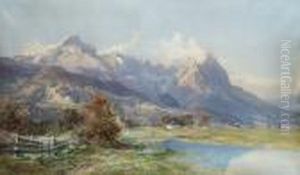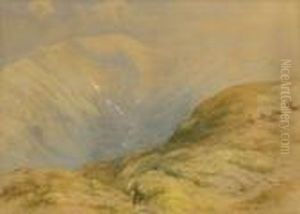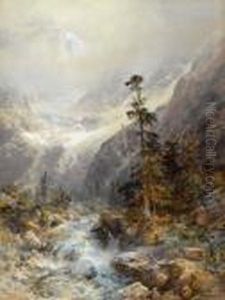Edward Theodore Compton Paintings
Edward Theodore Compton, usually referred to as E. T. Compton, was an English-born, German artist, illustrator, and mountain climber. He was born on July 29, 1849, in Stoke Newington, a suburb of London. Compton is primarily known for his landscape paintings, particularly those depicting the Alps.
Initially, Compton pursued a career in business, but his passion for art and nature soon led him to abandon this path to focus on painting. He was largely self-taught, which was quite common for artists of his time. His love for the mountains was not only reflected in his art but also in his lifestyle, as he was an avid mountaineer. Throughout his life, Compton climbed many of the major peaks in the Alps, which provided him with profound inspiration for his work.
In 1868, Compton moved to Darmstadt, Germany, and later settled in Feldafing, near Munich. The move to Germany was pivotal in his artistic development, as he became part of a community of artists who were similarly enthusiastic about the natural world. Compton married Gertrude Käsebier, and they had three children, including Dora Keen, who became a notable mountain climber in her own right.
His work was characterized by its meticulous attention to detail and its realistic portrayal of mountain landscapes, which often included dramatic lighting and atmospheric effects. Compton worked primarily in oils and watercolors, and his paintings were widely exhibited throughout Europe, earning him a reputation as one of the foremost landscape painters of his time.
Compton's illustrations were also in high demand, and he contributed to various travel books and alpine literature, which helped to popularize mountain climbing during the late 19th and early 20th centuries. His illustrations and paintings served as a visual record of the alpine landscape before the widespread impact of tourism and development.
Edward Theodore Compton continued to paint and climb mountains until his death on March 22, 1921, in Feldafing. His legacy as an artist and mountaineer lives on, and his paintings are still admired for their beauty and historical value. Compton's work can be found in many private and public collections, and he remains a celebrated figure for both art enthusiasts and the mountaineering community.
